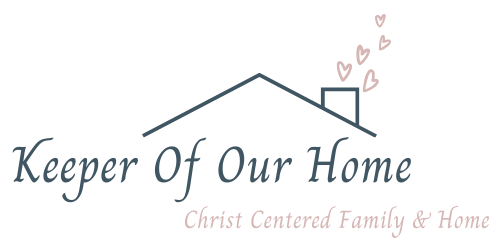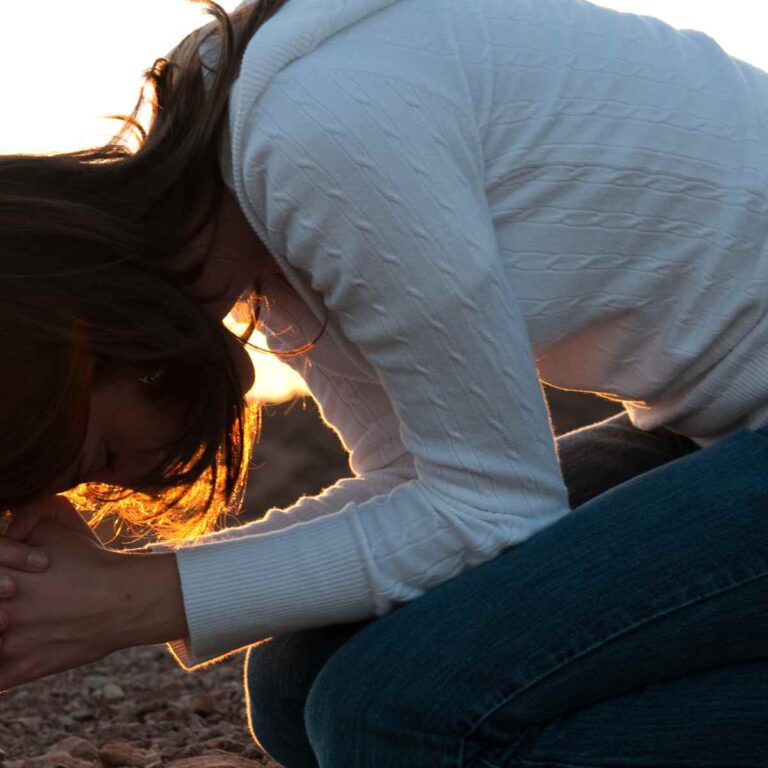Natural At-Home Remedies for Mastitis (That Actually Work!)
Mastitis is one of those unexpected breastfeeding curveballs that hits hard and fast. It’s a painful inflammation in the breast, usually caused by a clogged milk duct or infection. You might feel fine one minute, and then the next you’re achy, feverish, and struggling through breastfeeding. I’ve been there. Twice!
The good news? Mastitis can usually be treated at home using gentle, natural remedies. And when caught early, these simple steps can help relieve symptoms and even prevent the need for antibiotics.
My Personal Experience With Mastitis
As a mother who has breastfed three times and experienced mastitis twice, let me share my personal experience, especially how effective natural remedies can be when dealing with this bacterial infection and making breastfeeding easier.

As an Amazon Associate I earn from qualifying purchases. This post may contain affiliate links which means I make a small commission at no extra cost to you.
Is Mastitis Serious?
Mastitis is not usually a serious condition but it is very painful. It affects about 10% of all breastfeeding moms in the U.S. (source) and can usually be treated at home with natural remedies.
What Does Beginning of Mastitis Feel Like?
The first time I experienced mastitis it came on suddenly in the middle of the night. I was eight weeks postpartum and still getting up with the baby every two to three hours. I woke up with a high fever and my left breast was very tender, red, hot to the touch and had a hard lump on the side.
The second time I started feeling very tired and just not myself in the middle of the day. I didn’t think much of it at first but within a few hours the tell tale signs of mastitis started……painful red breast, and a lump, this time in my right breast.
As I said before, spotting the early signs of mastitis can make a big difference in how fast you get better or how long it takes to heal.
Mastitis Symptoms
- Breast pain or tenderness
- Swelling in the breast
- Redness on the breast skin
- Warmth in the affected area
- Flu-like symptoms (fever, chills, fatigue)
- A burning sensation during breastfeeding
- Sore or cracked nipples
- A lump in the breast that feels hard or painful
As soon as you start feeling any of thes symptoms, it’s important to take action quickly to prevent the condition from getting worse.
Can Mastitis Be Treated Without Antibiotics?
Most of the time home remedies for mastitis are enough to help with the pain and quickly get you back on your feet. But if you experience a high fever for more than 24 hours, antibiotics may be necessary to help clear an infection.
If you develop a serious infection and have to take antibiotics, make sure to supplement with probiotics and fermented foods to lower your chances of also getting a yeast infection.
Yeast infections are super common after taking antibiotics.
Foods And Supplements To Fight Yeast Infection:
First of all, avoid sugar. Sugar feeds yeast.
Yogurt: Contains probiotics that help restore healthy bacteria in your body.
Garlic: Has antifungal properties that can combat yeast infections.
Coconut Oil: Contains caprylic acid, which has antifungal effects.
Apple Cider Vinegar: Helps balance your body’s pH and fight yeast.
Cranberries: Can prevent yeast from sticking to surfaces in the body.
Oregano Oil: Contains carvacrol and thymol, which have antifungal properties.
Probiotic Supplements: Help restore the balance of good bacteria in your gut.
Tea Tree Oil: Known for its antifungal properties (use diluted and externally).
Vitamin C: Boosts your immune system to fight off infections.
Turmeric: Has antifungal and anti-inflammatory properties.
Fermented food and drinks like sauerkraut or kimchi and Kombucha.
Tried And Tested Natural Home Remedies For Mastitis
At the first symptoms of mastitis, taking quick action is very important.
Applying cold packs can quickly reduce inflammation, ease breast pain, and lower swelling.
Keep breastfeeding or use a breast pump to maintain milk flow, even if it hurts, to prevent milk from getting stuck and causing more issues.

The very first thing you need to do is get the clogged milk duct completely drained. The best way to do that, is to rent a hospital grade pump, a regular pump won’t have enough power at least not one I have ever owned.
You can rent a good one from a lactation consultant, or the hospital where you delivered might rent them out as well. If you had a home birth ask your midwife if she has one available.
I’ve decided that if I was to have another baby, it might be a good idea to rent a hospital grade pump in advance just to have on hand for this very reason.
Nurse, nurse, nurse! Continue to nurse and/or pump as much as you can so you can unclog the blocked milk duct.
Eat raw garlic. Garlic has anti-inflammatory, antibacterial, anti-fungal, antioxidant, and anti-bacterial properties.
Garlic is nature’s antibiotic. Finely dice or crush a clove of garlic, let it sit for ten minutes and then put it on a tablespoon topped with raw honey and swallow. Do this with every meal until your symptoms stop.
Put a warm compress on your breast or take a hot shower while massaging the affected breast to help sooth and release some of the pressure from the clogged duct.
Take high doses of vitamin C.
Use essential oils. In a roller bottle add 5 drops of each lavender, tea tree (melaleuca), and wild orange essential oils and top off with a carrier oil like fractionated coconut oil. Put the lid on and shake well. Apply 3-4 times a day. I did it after I nursed.
- Lavender essential oil will sooth and heal the skin.
- Tea Tree essential oil is antimicrobial so it will help heal any infection.
- Wild Orange essential oil will cleanse your skin and the aroma will lift your mood.
7. Place cabbage leaves on the affected breast. Here is a post explaining why cabbage helps with mastitis.
8. Rest and stay hydrated.

Breastfeeding and Lactation Consultant Resources
La Leche League International will answer all your questions regarding breast feeding.
To find a lactation consultant near you visit the International Lactation Consultant Association directory and fill out a short form.
Lifestyle Changes for Mastitis Prevention and Recovery
Changing your lifestyle can help prevent mastitis and speed up recovery. New moms face many challenges, and mastitis shouldn’t be one of the toughest ones.
Simple changes can really lower the risk of getting this painful condition.
First, learning proper breastfeeding techniques is very important.
A poor latch or not fully emptying the breast can lead to blocked milk ducts, which can cause infection. Making sure the baby latches on correctly helps with milk flow and reduces sore nipples and breast pain.
Using different feeding positions, like the football hold, can also help. This position gives better control of the baby’s mouth and helps milk flow smoothly, reducing mastitis risk.
Staying hydrated and eating a healthy diet boosts the immune system, making it stronger to fight off infections.
Drinking enough water and eating nutritious food is so important, even during the busy and tiring days of new motherhood.
These lifestyle changes not only help with milk production but also improve overall health, protecting against breast infections.
How To Prevent Mastitis
The best thing you can do is take care of yourself.
Nourish yourself well, drink lots of bone broth.
Rest.
Get plenty of sleep.
Stay hydrated.
Frequent Nursing or pumping.
Do not wear a tight bra or clothing.
Don’t sleep on your tummy. Be aware to not put any kind of pressure on your breasts.
Take a Sunflower Lecithin supplement, it reduces the stickiness of breast milk and encourages milk flow.
Eat lots of fermented foods. Feed your gut good bacteria to avoid infections.
When to Seek Medical Help For Bacterial Mastitis
It’s important to know when natural remedies for mastitis aren’t enough.
Watch your symptoms closely. If you notice flu-like symptoms, worsening breast pain, or a lot of swelling that doesn’t seem to get better, it’s time to see a doctor.
These signs may mean serious issues like a breast abscess or a deep infection that needs medical attention.
Even if you prefer natural remedies, these symptoms suggest complications that require professional mastitis treatment like antibiotics.
How Long Does It Take For Mastitis To Clear Up?
The first 24 hours are the worst. Make sure to start these at home remedies as soon as you realize you have mastitis and do them multiple times a day.
At 48 hours you should no longer have a fever and should be feeling much better.
All your symptoms should continue to improve as the days pass but do NOT stop doing these remedies until you feel 100% back to normal.
The hard lump is the last thing to disappear usually around the 4th or 5th day.
From One Mama To Another
I am not a healthcare professional, just a mom who wants to help other moms experiencing this painful side effect of breast feeding.
I’ve had mastitis twice and stopped it in its tracks a third time using these at home remedies.
How about you? Have you experienced mastitis? Share with me in the comments what helped you.
Save For Later: At Home Remedies For Mastitis

Other articles you might like
The best gifts for breastfeeding moms
How to bring down baby fever naturally with home remedies
32 natural remedies for the common cold and flu
Boost your immune system with these 6 wellness habits
A minimalist baby must haves list and what you should skip.







I just want to say thank you for this great website. I found a solution here on keeperofourhome.com for my issue.
Awesome article! Thanks for sharing! I’ll be keeping it in mind for all my mama friends. Amen for cabbage. My sister brought me one as soon as I had my girl, breastfeeding went great for me so we cooked up a storm, but definitely a must to have just in case!
I have treated mastitis at home too. The homeopathic remedy phytolacca decandra is amazing for it, I take it now at the first sign of a clogged duct.
oooh I don’t know very much about phytolacca decandra. Thanks for sharing what helped you Dee, I’m definitely going to do some research on it!
Wow I really loved these tips! I had mastitis once with my first and was able to kick it naturally using a few of the same ones!
Thanks for sharing a lovely post. This post provided helpful tips and I found it to be super helpful.